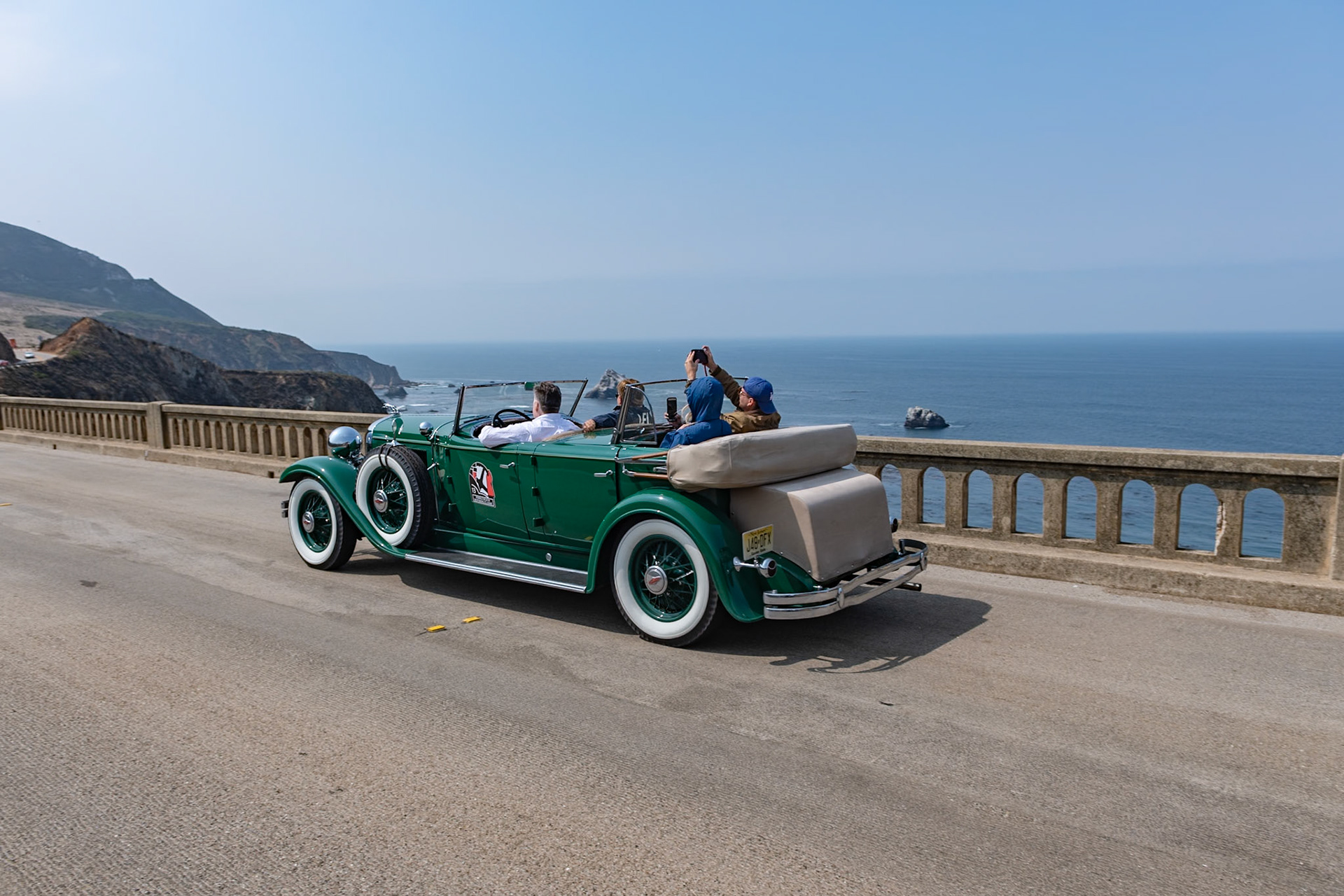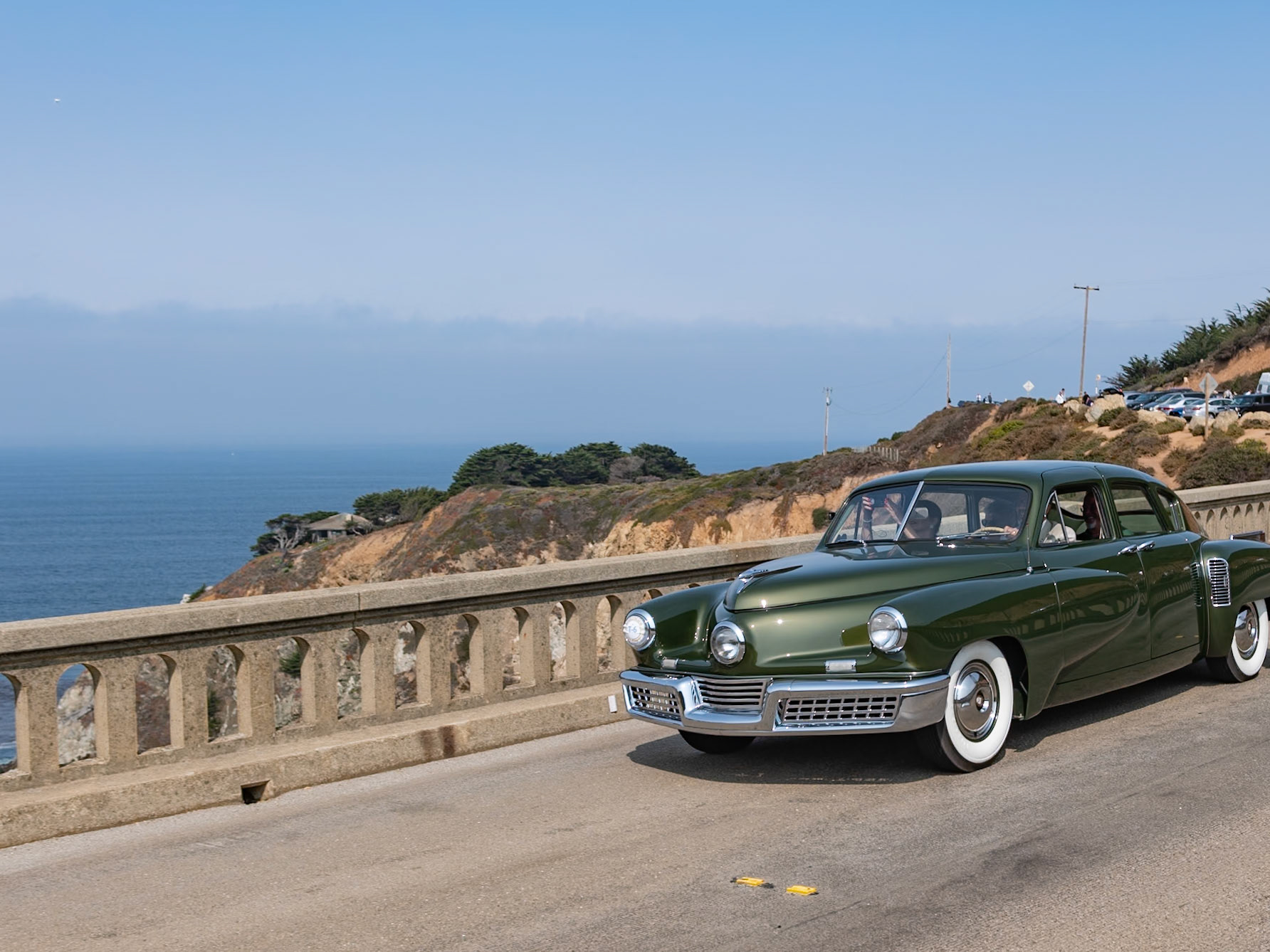
Marty and Linda Ellison, Bellevue, WA

This Lincoln KB-260 (chassis KB2432) has an L-head 448-cubic-inch, 150 bhp V-12 engine and is fitted with one of the most attractive of the coachbuilt bodies then available. Although just 533 KB chassis were sold, a remarkable 26 different body styles were offered by Lincoln and another 17 styles were available from custom coachbuilders. Built by Brunn & Company of Buffalo, New York, this striking Convertible Victoria with its low windshield, clean lines and close-coupled body is a masterpiece of the Classic Era. It is one of only three examples known to exist. It was first restored by noted Lincoln collector Roy Warshawsky and remained in his collection until his death. It was then acquired by Richard Scott, who returned the car to full operating condition after many years on static display. The current owner has further restored it.

Marty & Linda Ellison, Bellevue, WA

The first Lincoln K V12 with Brunn Touring Cabriolet coachwork was that of Herman Brunn himself. This body style was then offered in the Lincoln catalog in 1937, ’38 and ’39. Ten of these luxurious motorcars were built in 1937, and they were at the time the most expensive Lincoln cars ever made. This cabriolet has several interesting features, including a roof with tinted glass skylights above the windshield in order to see traffic lights more easily as well a convertible rear section that folds down so the rear passengers can get some sun. Inside, a hand-cranked divider window separates the driver from the passengers. In 1939, a similar Lincoln K V12 with fully convertible phaeton coachwork was offered by Edsel Ford for the use by King George VI and Queen Elizabeth when they visited the United States and Canada.

The first Lincoln K V12 with Brunn Touring Cabriolet coachwork was that of Herman Brunn himself. This body style was then offered in the Lincoln catalog in 1937, ’38 and ’39. Ten of these luxurious motorcars were built in 1937, and they were at the time the most expensive Lincoln cars ever made. This cabriolet has several interesting features, including a roof with tinted glass skylights above the windshield in order to see traffic lights more easily as well a convertible rear section that folds down so the rear passengers can get some sun. Inside, a hand-cranked divider window separates the driver from the passengers. In 1939, a similar Lincoln K V12 with fully convertible phaeton coachwork was offered by Edsel Ford for the use by King George VI and Queen Elizabeth when they visited the United States and Canada.

The first Lincoln K V12 with Brunn Touring Cabriolet coachwork was that of Herman Brunn himself. This body style was then offered in the Lincoln catalog in 1937, ’38 and ’39. Ten of these luxurious motorcars were built in 1937, and they were at the time the most expensive Lincoln cars ever made. This cabriolet has several interesting features, including a roof with tinted glass skylights above the windshield in order to see traffic lights more easily as well a convertible rear section that folds down so the rear passengers can get some sun. Inside, a hand-cranked divider window separates the driver from the passengers. In 1939, a similar Lincoln K V12 with fully convertible phaeton coachwork was offered by Edsel Ford for the use by King George VI and Queen Elizabeth when they visited the United States and Canada.

The Chrysler Corporation had used the Imperial model name to define its finer motor car offerings since the late 1920s, but they first chose to use the Imperial name as a stand-alone marque at the beginning of 1955. By 1957 the Imperial lineup was well into its second generation of body styles by Chryslers chief stylist Virgil Exner. His modern “Forward Look” futuristic style featured huge tailfins with gun-sight taillights, and a large rear “deck” that was almost nautical in its appearance. This 1957 Imperial Crown Convertible is one of just 1,167 produced. It was powered by Imperial’s 392 cubic inch Hemi V8, which produced 325 hp to move this 4,830-pound, 18-foot-long monster proudly out of the showroom after the buyer had paid the $5,598 price tag. This is truly an exceptional example from the era of “bigger is better.”

The Chrysler Corporation had used the Imperial model name to define its finer motor car offerings since the late 1920s, but they first chose to use the Imperial name as a stand-alone marque at the beginning of 1955. By 1957 the Imperial lineup was well into its second generation of body styles by Chryslers chief stylist Virgil Exner. His modern “Forward Look” futuristic style featured huge tailfins with gun-sight taillights, and a large rear “deck” that was almost nautical in its appearance. This 1957 Imperial Crown Convertible is one of just 1,167 produced. It was powered by Imperial’s 392 cubic inch Hemi V8, which produced 325 hp to move this 4,830-pound, 18-foot-long monster proudly out of the showroom after the buyer had paid the $5,598 price tag. This is truly an exceptional example from the era of “bigger is better.”

The Chrysler Corporation had used the Imperial model name to define its finer motor car offerings since the late 1920s, but they first chose to use the Imperial name as a stand-alone marque at the beginning of 1955. By 1957 the Imperial lineup was well into its second generation of body styles by Chryslers chief stylist Virgil Exner. His modern “Forward Look” futuristic style featured huge tailfins with gun-sight taillights, and a large rear “deck” that was almost nautical in its appearance. This 1957 Imperial Crown Convertible is one of just 1,167 produced. It was powered by Imperial’s 392 cubic inch Hemi V8, which produced 325 hp to move this 4,830-pound, 18-foot-long monster proudly out of the showroom after the buyer had paid the $5,598 price tag. This is truly an exceptional example from the era of “bigger is better.”

1931 Lincoln K Dual Cowl Phaeton,Murphy Steve & Susan Babinsky Lebanon, N.J.

1931 Lincoln K Dual Cowl Phaeton,Murphy Steve & Susan Babinsky Lebanon, N.J.

1931 Lincoln K Dual Cowl Phaeton,Murphy Steve & Susan Babinsky Lebanon, N.J.

The first Lincoln K V12 with Brunn Touring Cabriolet coachwork was that of Herman Brunn himself. This body style was then offered in the Lincoln catalog in 1937, ’38 and ’39. Ten of these luxurious motorcars were built in 1937, and they were at the time the most expensive Lincoln cars ever made. This cabriolet has several interesting features, including a roof with tinted glass skylights above the windshield in order to see traffic lights more easily as well a convertible rear section that folds down so the rear passengers can get some sun. Inside, a hand-cranked divider window separates the driver from the passengers. In 1939, a similar Lincoln K V12 with fully convertible phaeton coachwork was offered by Edsel Ford for the use by King George VI and Queen Elizabeth when they visited the United States and Canada.

The Chrysler Corporation had used the Imperial model name to define its finer motor car offerings since the late 1920s, but they first chose to use the Imperial name as a stand-alone marque at the beginning of 1955. By 1957 the Imperial lineup was well into its second generation of body styles by Chryslers chief stylist Virgil Exner. His modern “Forward Look” futuristic style featured huge tailfins with gun-sight taillights, and a large rear “deck” that was almost nautical in its appearance. This 1957 Imperial Crown Convertible is one of just 1,167 produced. It was powered by Imperial’s 392 cubic inch Hemi V8, which produced 325 hp to move this 4,830-pound, 18-foot-long monster proudly out of the showroom after the buyer had paid the $5,598 price tag. This is truly an exceptional example from the era of “bigger is better.”

1931 Lincoln K Dual Cowl Phaeton,Murphy Steve & Susan Babinsky Lebanon, N.J.
























